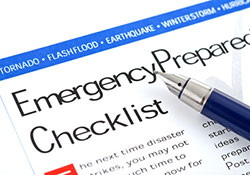Готовность к чрезвычайным ситуациям

Fotolia
How does the UN define preparedness?
The United Nations International Strategy on Disaster Reduction defines preparedness as “the knowledge and capacities developed by governments, professional response and recovery organizations, communities and individuals to effectively anticipate, respond to, and recover from, the impacts of likely, imminent or current hazard events or conditions”.
What is WHO’s role in preparedness?
WHO provides technical support to implement emergency preparedness programmes on both the national and regional levels in order for Member States’ health systems to anticipate and effectively respond to the needs of people affected by a crisis and consequently, save lives. Crisis response plans, exercises and training are vital as they assign responsibilities, identify potential gaps and indicate fall-back mechanisms.Public Health institutions and critical infrastructure facilities – such as hospitals, educational institutions and water systems – should be made resistant to the effects of floods, earthquakes and other natural hazards. The challenge is to ensure that appropriate consideration is given to structural safety when installations are planned and built, and to ensure that necessary retrofitting of health facilities is carried out.
In addition to improving the emergency preparedness of their national health sectors, World Health Assembly resolution 58.1 urges Member States “to engage actively in the collective measures to establish global and regional preparedness plans that integrate risk-reduction planning into the health sector and build up capacity to respond to health-related crises”.
Activities carried out by WHO/Europe to strengthen preparedness include:
- Country risk assessments
- Technical workshops
- Training activities
- Technical guidance and support



